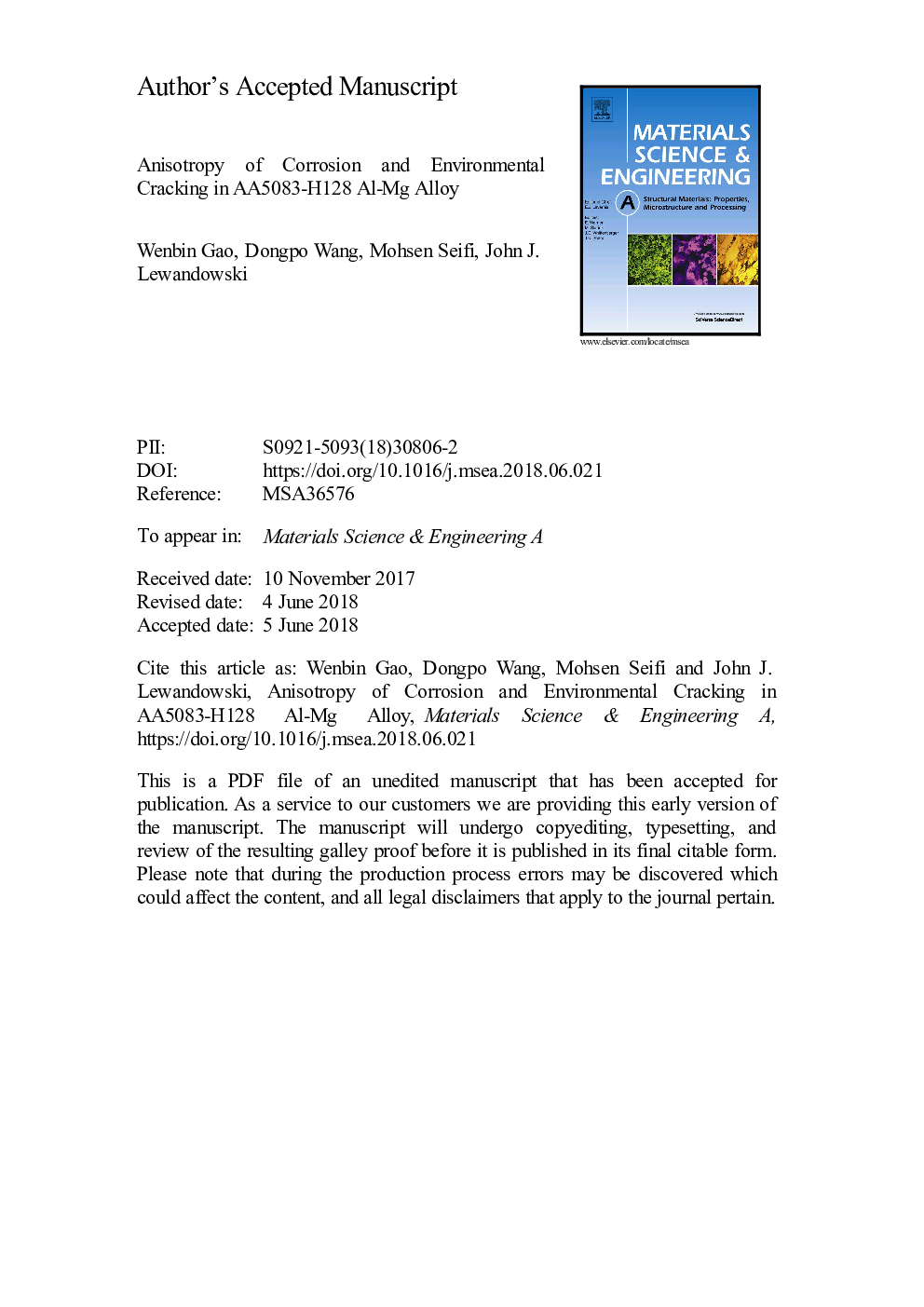| Article ID | Journal | Published Year | Pages | File Type |
|---|---|---|---|---|
| 7971825 | Materials Science and Engineering: A | 2018 | 42 Pages |
Abstract
The effects of sensitization (175â¯Â°C for 100â¯h) and microstructure anisotropy on corrosion and environmental cracking of AA5083-H128 have been studied using immersion tests, electrochemical experiments and slow strain rate tests (SSRT). Pitting corrosion attack is observed for as-received (AR) and sensitized polished surfaces after immersion in 0.6â¯M NaCl solution at open circuit potential and is strongly dependent on the amount and distribution of intermetallic particles, including Mg-rich phases resulting from sensitization, as well as pre-existing anodic Mg-rich and cathodic (Mn, Fe)-rich particles. Anodic potentiodynamic polarization experiments indicate that sensitization increases the activity of the surface with a negative shift in corrosion potential and an increase in anodic reaction kinetics. SSRT tests show that samples orientated along the short transverse (S) direction exhibit the largest susceptibility to intergranular stress corrosion cracking (IGSCC), followed by samples with transverse (T) orientation, and then samples with longitudinal (L) orientation. Serrated stress-strain response and flow instability, referred to as the Portevin-Le Chatelier (PLC) effect, is exhibited in SSRT curves, and is more pronounced in L-orientated samples compared to T- and S-oriented samples. The effects of microstructure anisotropy and sensitization on the environmental cracking and the PLC effect are discussed.
Keywords
Related Topics
Physical Sciences and Engineering
Materials Science
Materials Science (General)
Authors
Wenbin Gao, Dongpo Wang, Mohsen Seifi, John J. Lewandowski,
